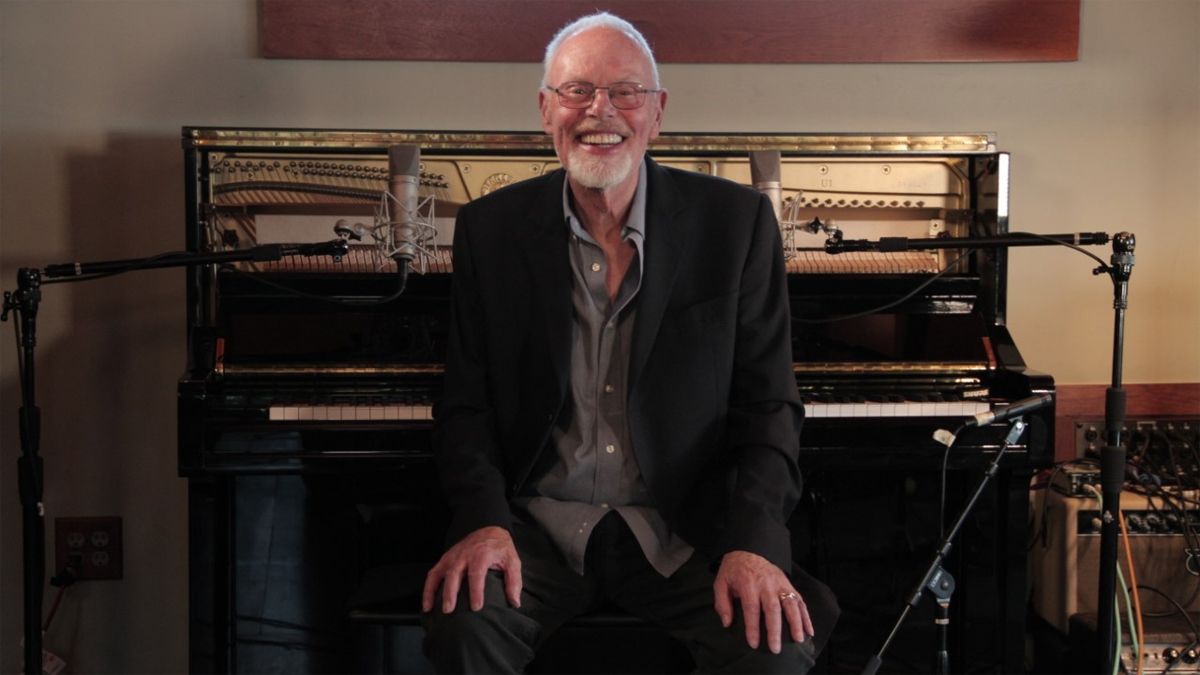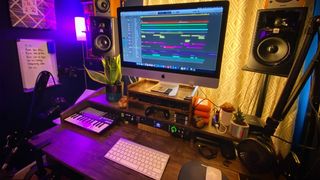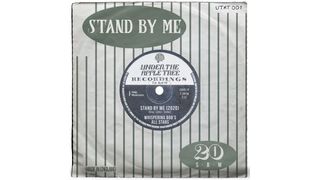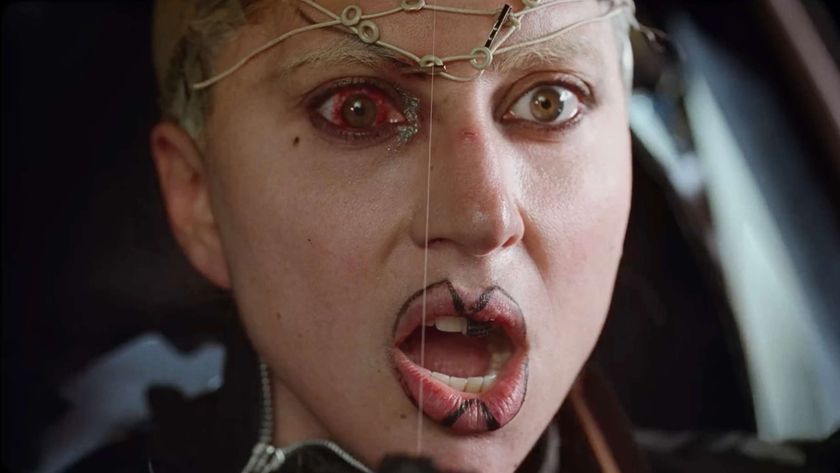“There was something very special about receiving Mark Knopfler’s raw guitar files”: How Whispering Bob's Allstars recorded Stand By Me for charity in lockdown
New version of Ben E King’s iconic Stand By Me also features Rick Wakeman and Paul Rodgers

When the celebrated radio and TV presenter 'Whispering Bob' Harris marked half a century of broadcasting - from presenting The Old Grey Whistle Test in 1970 to his legendary radio shows - he decided to assemable 55 famous names to re-record Ben E King’s classic Stand By Me, his favourite song, which itself is celebrating 60 years since release.
Harris also decided to donate the profits of the release to Help Musicians - a charity very much under the spotlight due to the current coronavirus situation.
“COVID-19 has had a devastating impact on the UK music scene," he says. "The artists who rely on live performances for their income have been particularly hard hit. For the past six years [music brand] Under The Apple Tree has been a fantastic platform for emerging artists and now, in this time of difficulty, we want to raise funds to help the diverse and dedicated grassroots music community that we love so much.”
With artists including Mark Knopfler, The Shires, Duane Eddy, PP Arnold, Peter Frampton, Mica Paris, Rick Wakeman and John Oates signing up - among an incredible line-up of other big names - Harris had to enlist a reliable recording engineer to gather all the recordings from locations around the world during these unprecedented times.
There was only one person for the job: Bob’s own son Miles Myerscough-Harris, who has spent a decade as a top-class recording engineer.
Here, Miles reveals the highs and lows of this major recording project - with a great cause at its heart - and the virtual challenges he faced.
How did you get involved in the recording industry? Was it inevitable given who your father is?
Get the MusicRadar Newsletter
Want all the hottest music and gear news, reviews, deals, features and more, direct to your inbox? Sign up here.
"I guess it's always been in my DNA! My dad has been an integral part of the UK music scene for 50 years now, and growing up I just soaked in all of the incredible musical experiences that were going on around me while being around him and my mother Trudie. Live sessions, gigs, impromptu garden performances - these were all a regular occurrence in my childhood, and I suppose inadvertently helped to hone my musical ear in my adolescence.
"Fast forward to 2020 and I have forged a path as a recording/mix engineer and producer through founding Under The Apple Tree Sessions, with which I have now recorded over 500 artists in session. This gained me a bit of a reputation in the industry which led to forming my own business for my music production work outside of those sessions, WholeHog Media."
You were the obvious choice for this project then…
"Well, I guess it helps that I’m his [Bob's] son, but I think, with the single partly being a celebration of his 50th anniversary in broadcasting, and a recreation of his favourite-ever song, he wanted someone he could trust and bounce ideas back and forth with comfortably. Luckily I got the gig!"
What was the brief at the start of the project?
"It was to put our own mark on it but remain true enough to the original, and to make sure all the artists involved got their moment somewhere in the song. I hope and think we achieved that."

How did you go about planning it and getting all the recordings together?
"This has been the biggest job I’ve taken on. To start with, we made a list of everyone we’d like to be in the ‘house band’ to start piecing together the instrumentation.
“The first thing I wanted done was the double bass to act as the backbone for everyone else to track over, but from then on it was basically whoever sent us their part next!
“From there, I started working with the parts I was sent and picking moments from each of them. Then, once I was totally happy with the instrumentation, I started mixing the vocals.
“I tried to give every vocalist a moment in the song, which was difficult as we had over 50 musicians on it! It ends with everyone singing the final line in unison which rounds it off really nicely."
What was the biggest challenge during the recording and mixing?
"Just making sure every contributor had their moment without it becoming too muddy. In total we had two basses, one drummer, one percussionist, four acoustic guitars, seven electric guitars, two pianos, two violins, two cellos, one Hammond, one pedal steel, 38 vocals and a triangle! So, making sure that all translated into a cohesive song was the biggest challenge for sure.
What were the most memorable recording moments?
"The vast majority of the contributions were recorded remotely and sent on to me, so I only had to track four or five of the parts myself. Judie Tzuke was one of them, and she was wonderful. There was also something very special about receiving Mark Knopfler’s raw guitar files - bit of a career bucket list moment. Steve Cradock’s guitar parts are beautiful as well, they just glue everything together brilliantly."
Were there any recordings that just did not work out?
"Luckily, no. Some people obviously sent me several different takes and versions of their parts which didn’t make it in, but everyone who agreed to take part is in the final mix."
Rick Wakeman’s piano is very prevalent at the start of the song and into the first chorus, but after the drums come in it takes more of a back seat to make room for Mark Knopfler and Duane Eddy.
How did you piece together all of the recordings?
"For the vocals, it was a case of listening through each performance and picking the best moments, then trying to find a way to work them all in. I used a similar approach with the instruments after the crux of the arrangement was there, meaning the more lead parts could each have their moments during the song.
“For example, Rick Wakeman’s piano is very prevalent at the start of the song and into the first chorus, but after the drums come in it takes more of a back seat to make room for Mark Knopfler and Duane Eddy."
What did you take away from the experience?
"A great deal about the virtue of minimalism, as contrary as that sounds after mixing a song with 55 musicians! It’s been a great lesson in learning that less is often more, which is the approach I’ve taken with the track.
“I could easily have left everyone’s parts in all the way through as they are all wonderful, but each part has to have its own spot in the mix, and that meant losing a lot of each of them to find the perfect moment where they fit in."
And, overall, what studio or recording advice do you have for our users?
"I’ve always said that I think the atmosphere in the studio is more important than anything else. It doesn’t matter if you’ve got the best gear in the world, if the artist you’re recording is feeling uptight and nervous, you’re never going to capture a great performance in the first place. So make everyone feel completely at ease and as comfortable as possible before you get rolling. That way the performance is going to be the best it can be and it is also when the best ideas come out."
Finally, what have you got planned for the future?
"I’m in the middle of mixing an album for a great artist called Demi Marriner which will be released soon, I’m also producing an EP with a great up-and-comer called Jonny Morgan, plus several more big projects that I’m sworn to secrecy on! And I’ll continue to record Under The Apple Tree sessions for the foreseeable future, of course. I’m also beginning plans to start building a new studio space, which will hopefully be realised by the end of next year."
Stand By Me, by Whispering Bob's Allstars, is available on 27 October. You can pre-order it or donate to support Help Musicians now.

Andy has been writing about music production and technology for 30 years having started out on Music Technology magazine back in 1992. He has edited the magazines Future Music, Keyboard Review, MusicTech and Computer Music, which he helped launch back in 1998. He owns way too many synthesizers.

"A classic compressor for free on Valentine's Day – it must be love!": Universal Audio is giving away an 1176 plugin as a Valentine's gift - here's how to get it and use it

“A magical part is this sidechain with the bass”: Lady Gaga breaks down Disease in new studio video










